SORTING MATERIALS INTO GROUPS for Class 6 SCIENCE
Introduction
Ab tak hamne last chapters mein kafi materials jaise food aur uske components, clothes aur type of clothes ke baare mein padha. Iss chapter mein hum sabhi materials ko groups mein classify karenge. Hum apne aas-pass present objects ko dekhenge, notice karenge aur different groups mein classify karenge.
NULL
OBJECTS AROUND US|PROPERTIES OF MATERIALS
Objects Around Us
Hum apni daily life mein dekhte hai ki hamare aas-paas food aur clothes ki kitni variety available hai. Sirf food aur clothes mein nahi hamare aas-paas jitne bhi objects available hai sabhi ki different varieties available hai. Eg- Hum apne aas-paas chair, bullock cart, cycle, cooking utensils, books, clothes, toys, etc. ki bahut sari varieties dekhte hai. Inn sabhi objects ke different shapes, colours, size, material aur uses hote hai. Inke basis par hi hum objects ko different groups mein classify kar sakte hai. Hamare aas-paas sabhi objects ek ya usse jyada materials se mil kar bane hai. Yeh materials glass, plastic, metal, wood, cotton, paper, mud, soil kuchh bhi ho sakte hai.
Hum objects ki ek list banate hai aur identify karte hai ki yeh objects kis material se bante hai. See figure.
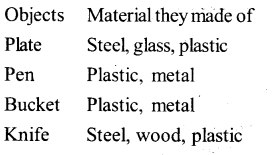
Ab hum kuchh aise materials ki list banayenge jinke baare mein hamein pata hai aur dekhenge ki inn materials se kounse objects bante hai.

Inn tables se hamne jaana ki hamare around jitne bhi objects hai wo different materials se bante hai. Kuchh objects aise hote hai jo single material se bhi bante hai i.e. ek material ko bahut saare objects banane ke liye use kiya jata hai. Lekin hamein kaise pata chalega ki kounse material se kounsa object banaya ja sakta hai? Iske liye hum dekhenge ki material kya hota hai aur uski kya properties hoti hai.
Properties Of Materials
Agar hum kisi cloth material se tumbler banaye to kya hoga? Water usme se seep out hojayega (see figure). Toh tumbler banane ke liye hamein glass, plastic ya metal jaisa material chahiye. Hamein Yeh hi material kyon chahiye iske liye hum iski kuch properties discuss karenge.
Appearance
Sabhi materials ek dusre se alag dikhte hai. Wood aur iron ek dusre se bahut different dikhte hai. Iron, copper aur aluminium ek dusre se bahut different dikhte hai. Lekin inme kuch similarities bhi hoti hai. Yeh sab janne ke liye hum ek activity perform karte hai.Activity
Kuchh metals air aur moisture ki vajah se apni shine loose kar dete hai isliye hum freshly cut surface par hi lustre ko observe karte hai. Agar hum kisi ironsmith ki workshop par jaye to waha hum freshly cut iron rods mein lustre ko obtain kar sakte hai.
Hardness
Jab hum kisi bhi material ko press karte hai, unme se kuchh material compress karne mein hard hote hai aur kuchh easily compress ho jate hai.
Jo materials easily scratch ya compress ho jate hai wo soft hote hai. Jo materials easily compress nahi hote wo hard hote hai. Eg- Cotton aur sponge soft hote hai aur iron hard hota hai.
Appearance mein metals ki different properties jaise lusture, hardness, rough ya smoothness ho sakti hai. Ab kuchh aur properties bhi dekhte hai.
Soluble or Insoluble?
Activity


Activity
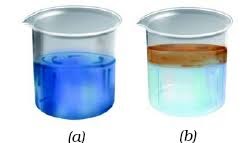
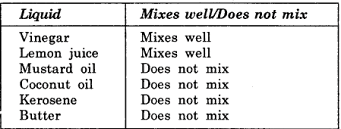
Object may float or sink in water
Above activities perform karte time hamne notice kiya ki insoluble solids water se separate ho jate hai. Insoluble liquids water par float karte hai aur kuchh objects water mein sunk kar jate hai. Niche image mein kuchh objects show kiye gaye hai jo water mein sink karte hai aur float karte hai.
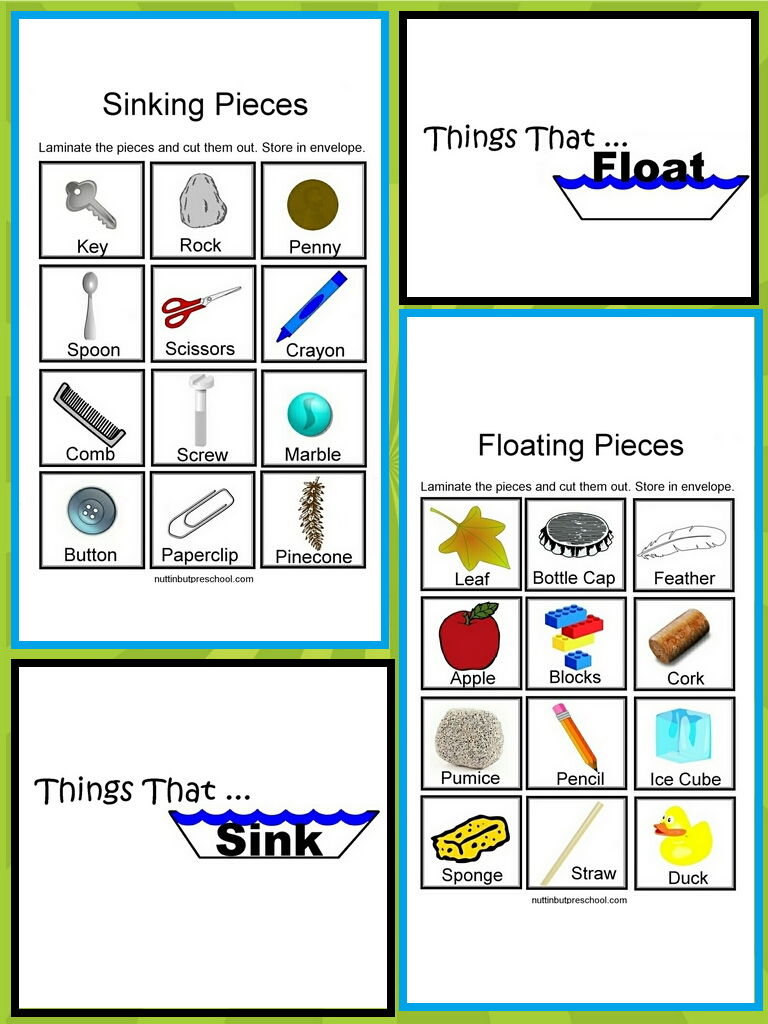
Transparency
Aise substances ya materials jisme se cheejo ko dekha ja sake unko transparent kehte hai. “Those substances or materials, through which things can be seen, are called transparent.”Eg- Glass, water, air and some plastics etc.
Shopkeepers usually biscuits, sweets aur other eatables ko transparent containers mein rakhte hai so that vo logo ko items purchase karne ke liye attract kar sake.
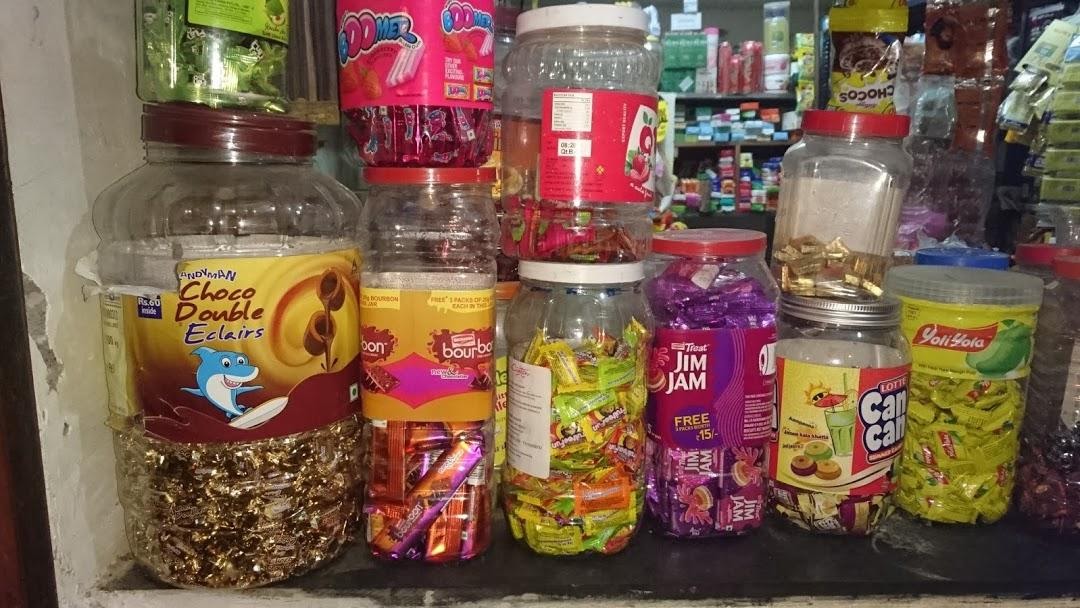
Lekin kuchh aise materials bhi hote hai jinme se cheezo ko nahi dekha ja sakta, aise materials ko opaque kehte hai.
“ Those substances or materials, through which we can not see the things, are called opaque.”
Eg- Wooden box, cardboard, metal container etc.
Kuchh materials aise bhi hote hai jinme se hum cheezo ko dekh to sakte hai par clearly nahi dekh sakte, aise materials ko translucent kehte hai.
“The materials through which objects can be seen, but not clearly, are known as translucent.”
Eg- Agar hum kisi sheet par oil spread kare aur uske through kisi bulb ko dekhe to vo hamein clearly dikhayi nahi dega.

Hamne sikha ki sab materials ki different properties hoti hai aur inki properties ki similarities aur differences ke basis par materials ko different groups mein classify kiya ja sakta hai. Daily life mein hum materials ko group karke similar things ko ek sath place karte hai taki un items ko dhoondne mein easy ho. Shopkeepers bhi isiliye similar items ek place par rakhte hai taki things easily mil jaye.
Materials ko groups mein divide karne se unki properties ko easily study kiya ja sakta hai. Inki properties ki details hum higher classes mein padhenge.
POINT 1
DIFFERENCE BETWEEN OPAQUE, TRANSLUCENT AND TRANSPARENT
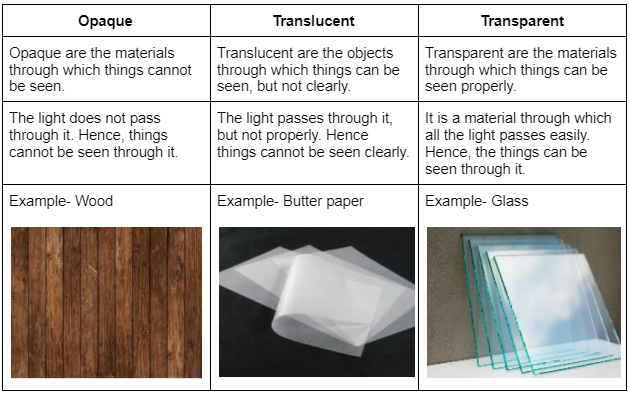
SUMMARY
1. Objects around us are made up of a large variety of materials.
2. A given material could be used to make a large number of objects. It is also possible that an object could be made of a single material or of many different types of materials.
3. Different types of materials have different properties.
4. Some materials are shiny in appearance while others are not. Some are rough, some smooth. Similarly, some materials are hard, whereas some others are soft.
5. Some materials are soluble in water whereas some others are insoluble.
6. Some materials such as glass, are transparent and some others such as wood and metals are opaque. Some materials are translucent.
7. Materials are grouped together on the basis of similarities and differences in their properties.
8. Things are grouped together for convenience and to study their properties.